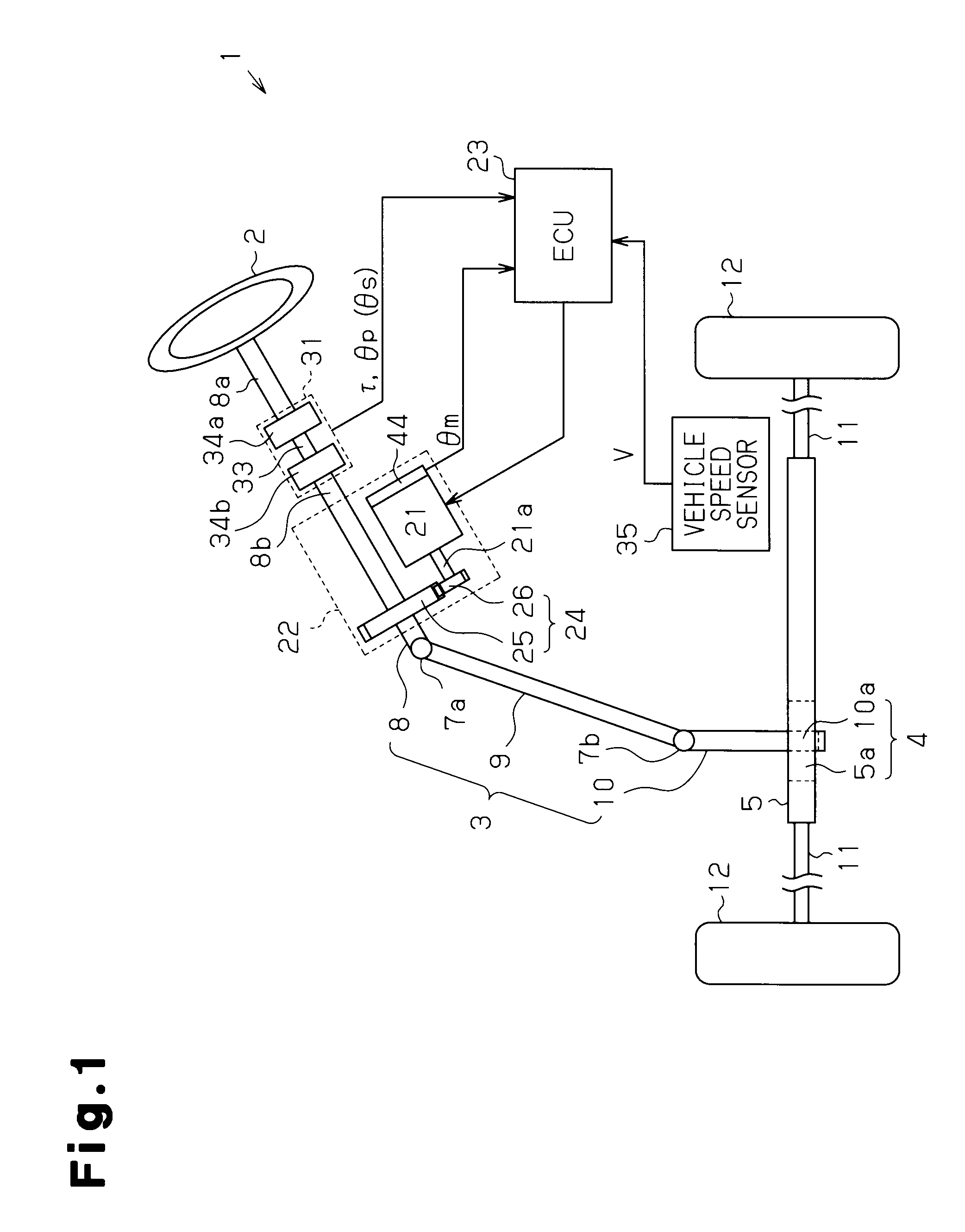Electric power steering apparatus
- Summary
- Abstract
- Description
- Claims
- Application Information
AI Technical Summary
Benefits of technology
Problems solved by technology
Method used
Image
Examples
first embodiment
[0026]A description will be given below of a column type electric power steering apparatus (EPS) according to a first embodiment of the present invention with reference to the accompanying drawings.
[0027]As shown in FIG. 1, a steering wheel 2 is fixed to a steering shaft 3. The steering shaft 3 is coupled to a rack shaft 5 via a rack-and-pinion mechanism 4. A rotation of the steering shaft 3 accompanying a steering operation is converted into a reciprocating linear motion of the rack shaft 5 by the rack-and-pinion mechanism 4. Specifically, in the steering shaft 3, a column shaft 8 and an intermediate shaft 9 are coupled to each other via a universal joint 7a, and the intermediate shaft 9 and a pinion shaft 10 are coupled to each other via a universal joint 7b. The rack-and-pinion mechanism 4 is constituted by pinion teeth 10a formed in an end portion of the pinion shaft 10, and rack teeth 5a provided in the rack shaft 5 and engaging with the pinion teeth 10a. The reciprocating line...
second embodiment
[0061]A description will be given below of a second embodiment of the present invention with reference to the accompanying drawings.
[0062]A main difference between the present embodiment and the first embodiment lies only in the control of suppressing the vibration caused by the stress applied to the steerable wheels 12. Accordingly, as a matter of convenience for explanation, the same reference numerals are attached to the same portions as those of the first embodiment, and a description thereof will be omitted.
[0063]As shown in FIG. 6, the microcomputer 41 is provided with a determining section 61 serving as determining means that determines whether a steering operation by a driver is being performed, that is, whether the EPS 1 is in a steering state. In the case that the determining section 61 determines that the steering operation is being performed, that is, at a time of the steering operation, the microcomputer 41 does not execute the enhancement of the torque inertia compensa...
third embodiment
[0075]A description will be given of a third embodiment of the present invention with reference to the accompanying drawings.
[0076]A main difference between the present embodiment and the first embodiment lies only in the control of suppressing the vibration caused by stress applied to the steerable wheels 12. Accordingly, as a matter of convenience for explanation, the same reference numerals are attached to the same portions as those of the first embodiment, and a description thereof will be omitted.
[0077]The microcomputer 41 serves as rough road determining means determining whether a road surface on which the vehicle is traveling, that is, a road surface is rough. In the case that the traveling road surface is determined as a rough road, the microcomputer 41 increases the torque inertia compensation amount Iti* corresponding to the compensation component based on the steering torque differential value dτ in the same manner as the first embodiment.
[0078]In other words, at a time ...
PUM
 Login to View More
Login to View More Abstract
Description
Claims
Application Information
 Login to View More
Login to View More - R&D
- Intellectual Property
- Life Sciences
- Materials
- Tech Scout
- Unparalleled Data Quality
- Higher Quality Content
- 60% Fewer Hallucinations
Browse by: Latest US Patents, China's latest patents, Technical Efficacy Thesaurus, Application Domain, Technology Topic, Popular Technical Reports.
© 2025 PatSnap. All rights reserved.Legal|Privacy policy|Modern Slavery Act Transparency Statement|Sitemap|About US| Contact US: help@patsnap.com



